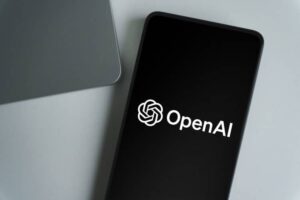Google Unveils AI Model for Robotics, Competing with Meta and OpenAI

Google DeepMind Launches New Robotics Models
Introduction to Gemini Robotics
Alphabet Inc.’s AI research division, Google DeepMind, is introducing two innovative models aimed at enhancing robot training for unpredictable environments. This release addresses a persistent challenge in robotics, which is how robots can effectively operate in real-world situations.
The new initiative, named Gemini Robotics, represents an extension of the main AI framework developed by Google. This branch focuses on making robots more adaptable and interactive. One specific model released is Gemini Robotics-ER, which emphasizes spatial awareness and will aid developers in creating advanced applications by harnessing Gemini’s reasoning skills.
Advancements in General-Purpose Robotics
According to DeepMind engineer Kanishka Rao, the integration of Gemini into robotic systems is a significant stride toward creating “general-purpose robotics.” Such robots would be equipped to handle a wide range of tasks and challenges, reflecting the complexity of diverse environments. Rao highlighted that the ability of robots to manage varied and dynamic contexts is crucial for their future development.
The ambition to develop robots capable of performing tasks akin to humans has seen a surge in interest and funding from major tech companies. Firms such as Meta, Tesla, and OpenAI are intensifying their robotics efforts, while startups in the sector are discussing significant investment opportunities.
Demonstrating New Capabilities
In a recent demonstration, Google showcased how robots utilizing these advanced models could effectively respond to straightforward instructions. One notable instance involved a robot spelling the word "Ace" using a set of letter tiles. Additionally, during a playful experiment set up as a toy basketball court, another robot successfully executed a dunk, demonstrating its ability to learn and interpret commands it had never previously encountered.
Rao expressed the team’s enthusiasm during these demonstrations, particularly with the basketball dunk, emphasizing that the robot had no prior experience with the concept of basketball. This achievement illustrates how the model allows the robot to understand fundamental ideas—such as what a basketball hoop looks like and the meaning of "slam dunk"—from context provided by the Gemini system.
Google’s Robotics Journey
Google’s history in the field of robotics has sometimes been tumultuous. Over the past decade, the company acquired numerous robotics firms in pursuit of building consumer-friendly robots powered by machine learning. These initiatives eventually merged into Google X, the innovation lab of Alphabet. In 2021, a separate entity named Everyday Robots was formed, focusing on robots for everyday tasks like trash sorting. Despite the discontinuation of this unit amid budget cuts in 2023, Google has maintained its presence in robotics and is now pivoting towards leveraging generative AI technologies to revive its efforts.
Safety and Future Developments
During discussions surrounding the new robotics models, Google highlighted that their research is still in a preliminary phase. Vikas Sindhwani, a research scientist at DeepMind, mentioned that the Gemini models were created with an emphasis on common-sense safety in real-world environments. The current plans involve a gradual deployment of these robots, initially maintaining a safe distance from human interaction while progressively enhancing their collaboration and interactivity as safety measures are refined.
Google is also collaborating with industry players, including Apptronik, to develop humanoid robots, while other partners like Agile Robots and Boston Dynamics are testing the Gemini Robotics-ER model. Boston Dynamics, which was under Alphabet’s ownership before being sold to SoftBank Group, brings substantial expertise in the field.
As Google advances its robotics efforts with these new models, the potential applications for robotics in everyday life continue to expand, promising exciting developments in the future of the industry.






